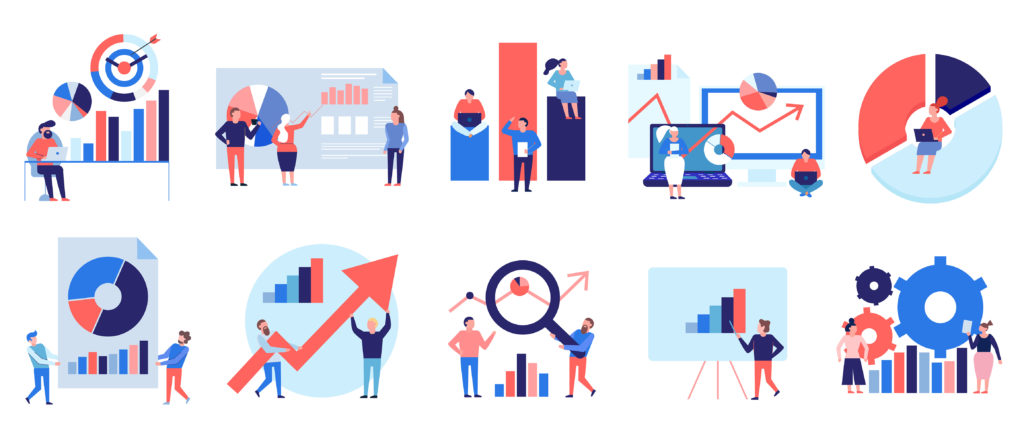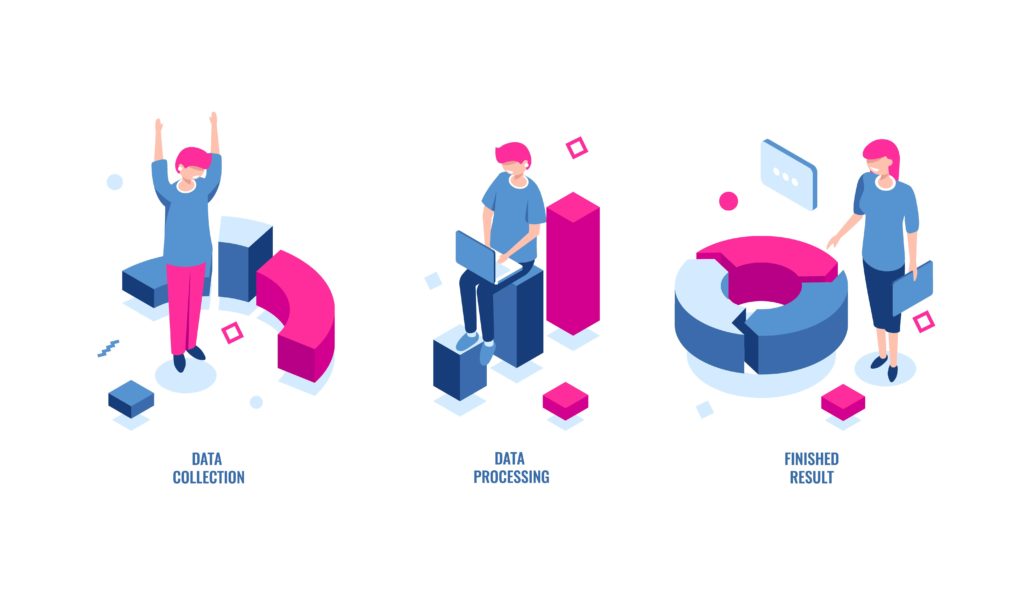Table of Contents
ToggleData Analytics: A Best Beginner's Guide In 2022

NextVee is a blog about Data Analytics: A Beginner’s Guide In 2022. A data analytics firm that provides critical insights to businesses.
What is data analytics?
Data analytics is the process of extracting and analyzing data to find trends and patterns. It can be used to make predictions about future events and optimize decision-making. It is a branch of data science, which also includes machine learning and artificial intelligence.
It has a wide range of applications, from marketing to healthcare. In business, data analytics can be used to improve customer service, target advertising, and increase sales. In the public sector, data analytics can be used to improve government services and reduce crime.
There are three main types of data analytics: descriptive, predictive, and prescriptive. Descriptive data analytics summarizes data to find trends and patterns. Predictive data analytics uses data to make predictions about future events. Prescriptive data analytics uses data to recommend actions to take in order to achieve the desired outcome.
Types of Data Analytics
There are four main types of data analytics:
- Descriptive analytics
- Diagnostic analytic
- Predictive analytics
- Prescriptive analytics
Descriptive Analytics
Descriptive analytics is the process of summarizing data to describe trends and patterns. It is a key part of data analysis and can be used to help make decisions about future actions.
Descriptive analytics can be used to answer questions such as:
– What is the average age of our customers?
– What are the most popular products?
– How much money do we make each month?
To perform descriptive analytics, data must first be collected and organized. Once this is done, various statistical methods can be used to summarize the data. Finally, the results of the analysis can be presented in a clear and easy-to-understand way.
Diagnostic analytics
Diagnostic analytics is a type of analysis that is used to identify problems or issues within a system. It is a form of preventative maintenance that can be used to avoid future issues from occurring. Diagnostic analytics can be used to troubleshoot equipment, software, or any other type of system.
The goal of diagnostic analytics is to identify problems before they cause major issues. Doing so can save organizations time and money by avoiding potential downtime or repairs. It is a vital tool for any organization that wants to keep its systems running smoothly.
Predictive analytics
Predictive analytics is a branch of data science that uses historical data to make predictions about future events. Predictive analytics is used in a variety of industries, from financial services to healthcare, to help organizations make better decisions and take action to improve business outcomes.
Predictive analytics relies on a variety of statistical techniques, including machine learning, to analyze data and make predictions. It can be used to answer questions like “What is the likelihood of this customer churning?” or “What is the probability of this patient developing this disease?”
Predictive analytics is a powerful tool, but it is not without its challenges. One challenge is that it can be difficult to institutionalize predictive analytics within an organization. Another challenge is that predictive models can be complex, and it can be difficult to explain their results to a decision.
Prescriptive analytics
Prescriptive analytics is a branch of data analytics that deals with making predictions about future events and trends. This type of analytics is used to make decisions about what actions to take in order to achieve desired outcomes.
Prescriptive analytics takes into account both historical data and current conditions to make predictions about the future. This type of analytics is usually used in business and marketing applications.
For example, prescriptive analytics can be used to make decisions about pricing, product development, and customer segmentation.
Prescriptive analytics is a powerful tool that can help businesses make better decisions and achieve their desired outcomes.

Data Analytics Process
It is the process of extracting, cleansing, transforming, and modeling data to generate insights that can be used to make better business decisions.
The process typically involves four main steps:
- Collecting data from various sources
- Cleaning and preparing the data for analysis
- Analyzing the data to find insights
- Communicating the results of the analysis
It is a vital tool for businesses of all sizes. By understanding the data analytics process, businesses can better utilize data to make better decisions and improve their operations.
How To Use Data Analytics To Improve Your Business
In today’s business world, data analytics is more important than ever. With the right data, you can make better decisions about your product, your marketing, and your overall strategy. And when it comes to data analytics, there are a few key things you should keep in mind.
First, you need to make sure you’re collecting the right data. This means having a clear understanding of your goals and what you’re trying to measure. Once you know what you want to track, you can start collecting data from your customers, your website, and other sources.
Next, you need to clean and organize your data. This step is important because it will make your data more useful and easier to work with. Once you have clean data, you can start to analyze it and look for trends and patterns.
5 Common Mistakes Businesses Make With Data Analytics
In the age of big data, more and more businesses are turning to help them gain insights into their operations. However, there is a right way and a wrong way to go about using data. All too often, businesses make common mistakes that can severely hamper their efforts.
Some of the most common mistakes businesses make with include:
- Not having a clear goal in mind.
- relying too heavily on data analytics tools.
- Not considering the human element.
- Not integrating the process into decision-making.
- Failing to monitor results.
By avoiding these mistakes, businesses can set themselves up for success with Business
Advantages Of Data Analytics For Small Businesses
It can seem like a daunting task for small businesses. However, there are many advantages that data analytics can provide for small businesses.
Data analytics can help small businesses to:
- Understand their customers better
- Make more informed decisions
- Save time and money
Data analytics can be a powerful tool for small businesses. When used correctly, it can help businesses to understand their customers better, make more informed decisions, and save time and money.
